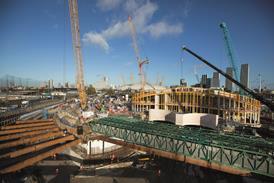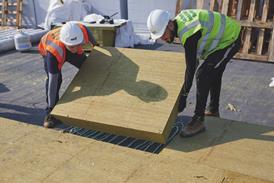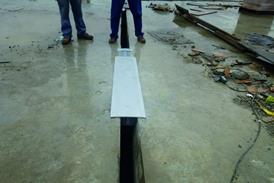- News
Regulations latest
All the latest updates on building safety reform
- Focus
- Comment
- Data
- Programmes
- CPD
- Events
- Jobs
- Subscribe
- Building Boardroom
Projects: The NHS’ first high-energy proton beam cancer treatment centre

The project to complete the centre, opening this summer at the Christie hospital in Manchester, was filled with a plethora of unusual challenges
For most people in Britain, the first time they were ever likely to have heard of proton beam therapy was during the Ashya King controversy in 2014. Five-year old Ashya was suffering from a brain tumour but was removed from Southampton General Hospital without his doctors’ consent to receive experimental proton beam treatment in Prague. An international manhunt ensued before the Kings were arrested in Spain and extradited back to the UK.
Beyond the sad personal crisis for the King family, the case served to bring to public attention a radical and highly sophisticated form of cancer treatment that at the time was unavailable in this country. But now, four years later, two new proton beam treatments centres are being built in the UK, one at University College Hospital London and the other at the Christie hospital in Manchester.
Each centre costs around £130m and both are being entirely funded by the NHS. It is Christie’s that is set to open first this summer and when it does, not only will it be the first proton beam facility in the UK but it aims to be the most advanced and sophisticated version of only a handful of proton beam treatment centres around the world (including the one in Prague where Ashya eventually received his treatment).
Fittingly, the building’s list of technical features is almost as extraordinary as proton beam treatment itself. To meet the building’s gigantic energy load a new sub-station was built, which provides an equivalent amount of power to that needed to run the nearby Trafford Industrial Park. To contain the radiation, the concrete walls are up to 6m thick. Consequently, despite being just three storeys high, the building comprises an incredible 20,000m³ of concrete with 1,700 tonnes of reinforcement provided by steel rebar up to 100mm thick. Through this, 10km of services pipework has been carefully embedded. The concrete itself weighs 48,000 tonnes, the equivalent of two aircraft carriers.
…
Already registered? Login here
To continue enjoying Building.co.uk, sign up for free guest access
Existing subscriber? LOGIN
Stay at the forefront of thought leadership with news and analysis from award-winning journalists. Enjoy company features, CEO interviews, architectural reviews, technical project know-how and the latest innovations.
- Limited access to building.co.uk
- Breaking industry news as it happens
- Breaking, daily and weekly e-newsletters
Get your free guest access SIGN UP TODAY

Subscribe now for unlimited access
Subscribe to Building today and you will benefit from:
- Unlimited access to all stories including expert analysis and comment from industry leaders
- Our league tables, cost models and economics data
- Our online archive of over 10,000 articles
- Building magazine digital editions
- Building magazine print editions
- Printed/digital supplements
Subscribe now for unlimited access.
View our subscription options and join our community



















